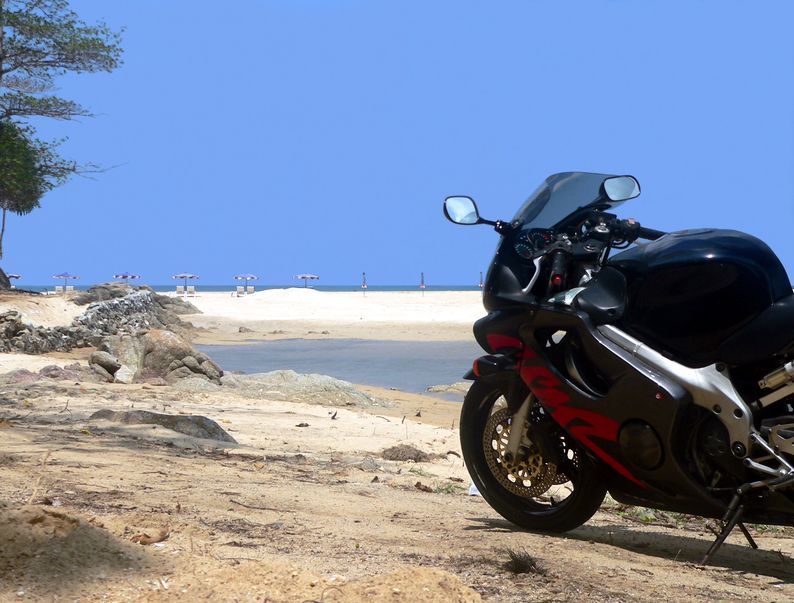10 Things Drivers Should Know About Motorcycles
December 29, 2022 | Category: Motorcycle Accidents | ShareFlorida’s population is increasing.  The Florida Department of Highway Safety and Motor Vehicles reported that between September 2020 and March 2021, 33,565 New Yorkers exchanged their drivers’ licenses for Florida drivers’ licenses. This was a 32 percent increase from the same period between 2019 and 2020.
The Florida Department of Highway Safety and Motor Vehicles reported that between September 2020 and March 2021, 33,565 New Yorkers exchanged their drivers’ licenses for Florida drivers’ licenses. This was a 32 percent increase from the same period between 2019 and 2020.
According to the International Sales Group (ISG) World’s latest Miami Report, close to 1,000 people move to Florida every single day. The Tampa Bay Economic Development Council reported that 115 people move to the Tampa Bay area every day.
Florida ranks #2 in registered motorcycles.
In 2020, Statista reported that Florida ranked number two with 620,077 registered motorcycles, behind California with 785,424 registered motorcycles. New York ranked third with 384,620, about half as many as Florida’s registered motorcycles.
"As new residents are coming to Florida daily, driving on our roads and interacting with motorcyclists in a state that ranks #2 in the nation with registered motorcycles, it is important for them to know how to keep our motorcycle population safe. Over the years, we have seen the devastation caused to our motorcycle community by negligent drivers who do not know how to interact with them. The safety of our motorcyclists is a major concern of Spivey Law Firm, Personal Injury Attorneys, P.A. so we are sharing 10 tips for drivers from the Motorcycle Safety Foundation (MSF),” said Florida Motorcycle Accident Attorney Randall Spivey.
- Over half of all fatal motorcycle crashes involve another vehicle. Most of the time, the car or truck driver, not the motorcyclist, is at fault. There are a lot more cars and trucks than motorcycles on the road, and some drivers don't "recognize" a motorcycle – they ignore it.
- Because of its narrow profile, a motorcycle can be easily hidden in a car’s blind spots (door/roof pillars) or masked by objects or backgrounds outside a car (bushes, fences, bridges, etc.). Take an extra moment to look for motorcycles, whether you're changing lanes or turning at intersections.
- Because of its small size, a motorcycle may look farther away than it is. It may also be difficult to judge a motorcycle’s speed. When checking traffic to turn at an intersection or into (or out of) a driveway, predict a motorcycle is closer than it looks.
- Motorcyclists often slow by downshifting or merely rolling off the throttle, thus not activating the brake light. Allow more following distance, say 3 or 4 seconds. At intersections, predict a motorcyclist may slow down without visual warning.
- Motorcyclists often adjust their position within a lane to be seen more easily and to minimize the effects of road debris, passing vehicles, and wind. Understand that motorcyclists adjust lane position for a purpose, not to be reckless or show off or to allow you to share the lane with them.
- Turn signals on a motorcycle usually are not self-canceling, thus some riders (especially beginners) sometimes forget to turn them off after a turn or lane change. Make sure a motorcycle's signal is for real.
- Maneuverability is one of a motorcycle's better characteristics, especially at slower speeds and with good road conditions, but don't expect a motorcyclist to always be able to dodge out of the way.
- The stopping distance for motorcycles is nearly the same as for cars, but slippery pavement makes stopping quickly difficult. Allow more following distance behind a motorcycle because you can't always stop "on a dime."
- When a motorcycle is in motion, see more than the motorcycle – see the person under the helmet, who could be your friend, neighbor, or relative.
- If a driver crashes into a motorcyclist, bicyclist, or pedestrian and causes serious injury, the driver would likely never forgive himself/herself.
We represent injured motorcyclists and their families throughout the state of Florida 24/7. Please contact our legal team should you or a loved one be seriously injured in an accident at 239.337.7483, or toll-free at 1.888.477.4839, or contact us online at SpiveyLaw.com. There are no costs or attorney fees until we receive a monetary recovery for you. Here is what one of our motorcycle accident victims had to say about working with our motorcycle accident team:
- Professional polite and they get the job done. If you have or had a motorcycle, make sure that you have their phone number! MIKE S.

